#article Science
Explore tagged Tumblr posts
Text
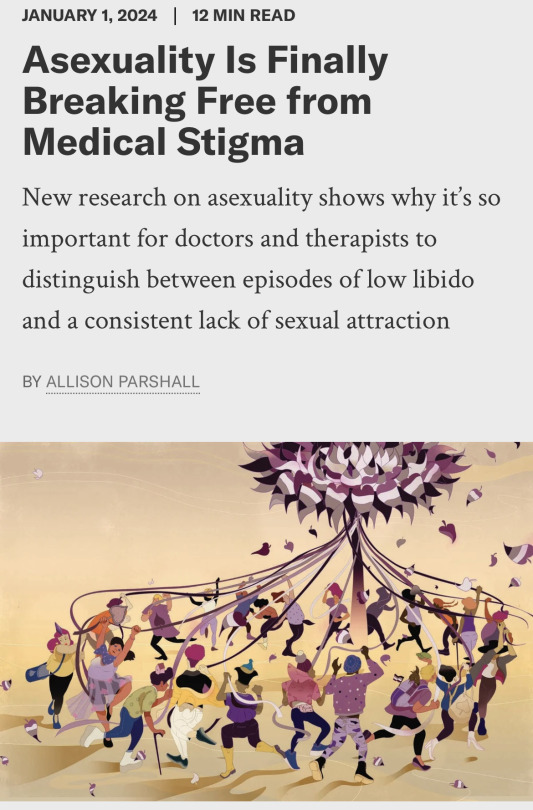
ACES!!! Look at this Scientific American article!!! It makes me genuinely so happy to read. We’re making it!!!!
https://www.scientificamerican.com/article/asexuality-is-finally-breaking-free-from-medical-stigma/
#asexual#demisexual#ace pride#queer#lgbtq#aromantic#aroace#GUYS READ IT PLEASE IM SO HAPPY!!!#update y’all check notes for the time traveling! I’m very honored ppl think I’m some ace time traveling god though. just for science article
44K notes
·
View notes
Text
HETEROSEXUAL CIS-PEOPLE LOOK HERE

Snaps my fingers at you as you scroll past this post
Look at me. Listen.
I'm not the best at serious posts, but that article up there reminded me of how important it is that people like you stand up for us. So hold on while I try to get this out of my mushy end-of-work-day brain.
We could fight this fight ourselves for decades trying to reach the equal laws, gender affirming trans healthcare that doesn't have a 2-5+ soul-eating years of waiting time, medical care with equal knowledge of lgbtqia+ bodies, and, what is often forgotten, inclusion in the little everyday areas of life like our way of speaking or things being set up or designed with the existence of queer people in mind.
But you joining in could get us there so much faster.
The power you have as a hetero cis person is that you set the standard for what is seen as the average way of treating us among other hetero cis people. You have been given the power of deciding what's "normal" and I'm begging you to use it.
Richard Green is a great example of to what extent your actions can help our situation, and smaller ways of support still add up to a great impact on society, and could make the days of the queer people you interact with.
Educate yourself before you speak up, but don't be silent.
#lgbtqia+#lgbtq#lgbtqia#lgbtq+#lgbtqia+ rights#lgbtq+ rights#lgbtq rights#interesting#article#psychology#mental health#psychologist#reading#culture#cooking#drawing#music#nature#science#baking#pets#inspirational#gaming#photography#fashion#writing
14K notes
·
View notes
Text
Here's the top 2 stories from each of Fix The News's six categories:

1. A game-changing HIV drug was the biggest story of 2024
In what Science called the 'breakthrough of the year', researchers revealed in June that a twice-yearly drug called lenacapavir reduced HIV infections in a trial in Africa to zero—an astonishing 100% efficacy, and the closest thing to a vaccine in four decades of research. Things moved quick; by October, the maker of the drug, Gilead, had agreed to produce an affordable version for 120 resource-limited countries, and by December trials were underway for a version that could prevent infection with just a single shot per year. 'I got cold shivers. After all our years of sadness, particularly over vaccines, this truly is surreal.'
2. Another incredible year for disease elimination
Jordan became the first country to eliminate leprosy, Chad eliminated sleeping sickness, Guinea eliminated maternal and neonatal tetanus, Belize, Jamaica, and Saint Vincent & the Grenadines eliminated mother-to-child transmission of HIV and syphilis, India achieved the WHO target for eliminating black fever, India, Viet Nam and Pakistan eliminated trachoma, the world’s leading infectious cause of blindness, and Brazil and Timor Leste eliminated elephantiasis.
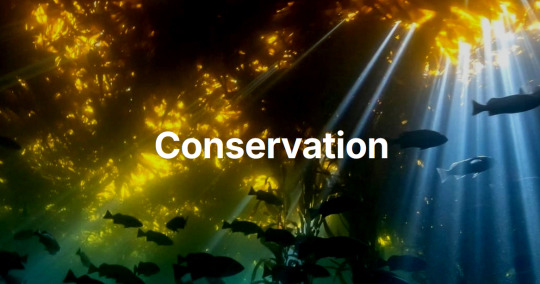
15. The EU passed a landmark nature restoration law
When countries pass environmental legislation, it’s big news; when an entire continent mandates the protection of nature, it signals a profound shift. Under the new law, which passed on a knife-edge vote in June 2024, all 27 member states are legally required to restore at least 20% of land and sea by 2030, and degraded ecosystems by 2050. This is one of the world’s most ambitious pieces of legislation and it didn’t come easy; but the payoff will be huge - from tackling biodiversity loss and climate change to enhancing food security.
16. Deforestation in the Amazon halved in two years
Brazil’s space agency, INPE, confirmed a second consecutive year of declining deforestation in the Brazilian Amazon. That means deforestation rates have roughly halved under Lula, and are now approaching all time lows. In Colombia, deforestation dropped by 36%, hitting a 23-year low. Bolivia created four new protected areas, a huge new new state park was created in Pará to protect some of the oldest and tallest tree species in the tropical Americas and a new study revealed that more of the Amazon is protected than we originally thought, with 62.4% of the rainforest now under some form of conservation management.

39. Millions more children got an education
Staggering statistics incoming: between 2000 and 2023, the number of children and adolescents not attending school fell by nearly 40%, and Eastern and Southern Africa, achieved gender parity in primary education, with 25 million more girls are enrolled in primary school today than in the early 2000s. Since 2015, an additional 110 million children have entered school worldwide, and 40 million more young people are completing secondary school.
40. We fed around a quarter of the world's kids at school
Around 480 million students are now getting fed at school, up from 319 million before the pandemic, and 104 countries have joined a global coalition to promote school meals, School feeding policies are now in place in 48 countries in Africa, and this year Nigeria announced plans to expand school meals to 20 million children by 2025, Kenya committed to expanding its program from two million to ten million children by the end of the decade, and Indonesia pledged to provide lunches to all 78 million of its students, in what will be the world's largest free school meals program.

50. Solar installations shattered all records
Global solar installations look set to reach an unprecedented 660GW in 2024, up 50% from 2023's previous record. The pace of deployment has become almost unfathomable - in 2010, it took a month to install a gigawatt, by 2016, a week, and in 2024, just 12 hours. Solar has become not just the cheapest form of new electricity in history, but the fastest-growing energy technology ever deployed, and the International Energy Agency said that the pace of deployment is now ahead of the trajectory required for net zero by 2050.
51. Battery storage transformed the economics of renewables
Global battery storage capacity surged 76% in 2024, making investments in solar and wind energy much more attractive, and vice-versa. As with solar, the pace of change stunned even the most cynical observers. Price wars between the big Chinese manufacturers pushed battery costs to record lows, and global battery manufacturing capacity increased by 42%, setting the stage for future growth in both grid storage and electric vehicles - crucial for the clean flexibility required by a renewables-dominated electricity system. The world's first large-scale grid battery installation only went online seven years ago; by next year, global battery storage capacity will exceed that of pumped hydro.

65. Democracy proved remarkably resilient in a record year of elections
More than two billion people went to the polls this year, and democracy fared far better than most people expected, with solid voter turnout, limited election manipulation, and evidence of incumbent governments being tamed. It wasn't all good news, but Indonesia saw the world's biggest one day election, Indian voters rejected authoritarianism, South Korea's democratic institutions did the same, Bangladesh promised free and fair elections following a 'people's victory', Senegal, Sri Lanka and Botswana saw peaceful transfers of power to new leaders after decades of single party rule, and Syria saw the end of one of the world's most horrific authoritarian regimes.
66. Global leaders committed to ending violence against children
In early November, while the eyes of the world were on the US election, an event took place that may prove to be a far more consequential for humanity. Five countries pledged to end corporal punishment in all settings, two more pledged to end it in schools, and another 12, including Bangladesh and Nigeria, accepted recommendations earlier in the year to end corporal punishment of children in all settings. In total, in 2024 more than 100 countries made some kind of commitment to ending violence against children. Together, these countries are home to hundreds of millions of children, with the WHO calling the move a 'fundamental shift.'

73. Space exploration hit new milestones
NASA’s Europa Clipper began a 2.9 billion kilometre voyage to Jupiter to investigate a moon that may have conditions for life; astronomers identified an ice world with a possible atmosphere in the habitable zone; and the James Webb Telescope found the farthest known galaxy. Closer to Earth, China landed on the far side of the moon, the Polaris Dawn crew made a historic trip to orbit, and Starship moved closer to operational use – and maybe one day, to travel to Mars.
74. Next-generation materials advanced
A mind-boggling year for material science. Artificial intelligence helped identify a solid-state electrolyte that could slash lithium use in batteries by 70%, and an Apple supplier announced a battery material that can deliver around 100 times better energy density. Researchers created an insulating synthetic sapphire material 1.25 nanometers thick, plus the world’s thinnest lens, just three atoms across. The world’s first functioning graphene-based semiconductor was unveiled (the long-awaited ‘wonder material’ may finally be coming of age!) and a team at Berkeley invented a fluffy yellow powder that could be a game changer for removing carbon from the atmosphere.
-via Fix The News, December 19, 2024
#renumbered this to reflect the article numbering#and highlight just how many stories of hope there are#and how many successes each labeled story contains#2024#good news#hope#hope posting#hopeposting#hopepunk#conservation#sustainability#public health#energy#quality of life#human rights#science and technology
3K notes
·
View notes
Text
https://ktla.com/news/california/goats-unleashed-by-san-manuel-tribe-as-part-of-fire-prevention-strategy/?fbclid=PAZXh0bgNhZW0CMTEAAaaJJAE-Kl55wk4vm1cYc0zjGRUEv8w6ps0HX0z-rxwwa7YXnTDCsgIU2vs_aem_0djT-2NoD-E87Ic6UeeqGw

Firefighting goats have been deployed by the San Manuel Band of Mission Indians to protect tribal land and neighboring property from potentially devastating brush fires.
The goats are unleashed by the San Manuel Fire Department to eat up dry brush and grass that would normally be ideal fuel for fires — a recent fire was actually partially stopped once it reached an area cleared by the caprine crew earlier this year.
The herd, officials said, is about 400-strong and is made up of generations of goat families.
On Tuesday, the goats were treated to a feast of fruit before being sent on their brush-eating mission.


The goats will spend the next several months trimming and thinning out vegetation on the San Manuel Band of Mission Indians Reservation and nearby properties in San Bernardino.
Tribal officials said the brush that covers the hillsides in and around San Manuel property is thriving and diverse, boosted by the recent history-making rainy season. The plant life is an ideal food source because goats prefer food that’s at their eye level.
The Tribe has used goats as a natural, environmentally friendly fire preventative tool since 2019; the plants get trimmed in a sustainable fashion, which allows them to survive and recover naturally overtime unlike most chemical sprays.
Tribal officials called the practice an extension of the Tribe’s “culture of lands stewardship.”
“Caring for the land is a sacred duty of the Tribe,” said Lynn Valbuena, chairwoman of the San Manuel Band of Mission Indians. “Stewardship is a responsibility given to our people by the Creator. No matter who owns the land.”
San Bernardino County residents shouldn’t be surprised to see the goats in the mountains fulfilling this divine task from now through the end of fire season.
#good news#environmentalism#goats#california#science#environment#nature#animals#indigenous stewardship#land stewardship#usa#sustainability#wildfire prevention#San Manuel Band of Mission Indians#san manuel band#firefighting#articles#news
4K notes
·
View notes
Text



Our beloved mushrooms are so much more than just forest decorations, motifs in Gothic literature, or images we associate with Hozier's debut album.
Fungi act as "carbon conduits" and enable over 90% of plants to sustain themselves. In "The Fungi in the Carbon Jigsaw" from JSTOR Daily, ecologist and photographer Timo Mendez reveals how fungi helped early plants colonize land, and how their hidden carbon-trading systems today might be the key to fighting climate change.
And he took these beautiful photos to boot! Read the article and view some more photos on JSTOR Daily.
Photos: Amanita muscaria, russula, and ectomycorrhizal fungi. All taken by Timo Mendez.
#jstor#jstor daily#article#timo mendez#mycology#ecology#climate science#fungi#mushrooms#amanita muscaria#russula#ectomycorrhizal fungi
547 notes
·
View notes
Text
UPDATE: a judge blocked this for now: https://apnews.com/article/donald-trump-pause-federal-grants-aid-f9948b9996c0ca971f0065fac85737ce
—
This is a huge fucking problem.
These grants account for more than 10% of the GDP. 3 trillion – wiped out.
From the article:
The funding freeze by the Republican administration could affect trillions of dollars and cause widespread disruption in health care research, education programs and other initiatives. Even grants that have been awarded but not spent are supposed to be halted.
“The use of Federal resources to advance Marxist equity, transgenderism, and green new deal social engineering policies is a waste of taxpayer dollars that does not improve the day-to-day lives of those we serve,” said a memo from Matthew Vaeth, the acting director of the Office of Management and Budget.
(Use of that language, that entire segment, "Marxist equity ... policies" is disgusting. If you think you're wary of propaganda and you do not see the enormous red flags in that statement, I do not know how to help you. If you're not beyond it, maybe pick up a history book — the 1930s are particularly pertinent.)
The average person may not understand just how far-reaching this is, how many programs and services are covered by grants, that regular people rely on all across the US and globally.
Not to mention how many people just had their livelihood demolished.
Researchers, for example, spend months and years writing grant proposals, their work and income relies on these cycles. So even if this is "temporary", a lot of people are going to struggle.
This is not just a few people in lab coats somewhere, working on something you don't care about. Government-funded research is released to the public, since we paid for it, and is very typically about things the public will want to know:
Is this product safe or deadly?
Is this medication actually a "wonder drug" or does it harm you in the long term?
Is this pollution going to affect us long-term?
Etc.
Seriously, if you wanted any of those things to get better — you wanted lower rates of cancer and other deadly and disabling disease? You worry about trusting public health guidelines because you're concerned about bias and vested interests in research? You want "small government" that doesn't interfere with people's bodies based on a small group's religious dogma, with zero basis in factual, verifiable reality?
Then you should have voted to keep this administration out of government.
Because their idea — which is outlined in Project 2025, and they are following it closely — is that research will be required to rely 50% on private funding.
Guess what private funding introduces a ton more of: private interests, private bias. The interests of stakeholders who do not give a shit if you are being killed by their product, as long as line goes up in the short run.
But even beyond scientific researchers — and those who rely on that work, e.g. journalists, science communicators, public health advocates, scientific artists —
grants fund others like: teachers, police, farmers, women's and homeless shelters, native orgs, medical workers, and on the list goes.
All pending "review" by a thoroughly unqualified gang of convicted criminals and cronies.
664 notes
·
View notes
Text
**URGENT** HELP SAVE THE USGS BEE LAB!
PLEASE circulate this as widely as possible, as soon as possible.
Hi all, you may not know me but I am a native bee researcher in the eastern US. People like me work to study and protect the 3600 species of native bees in North America, many of which are in severe decline.
We just received devastating news, that unfortunately was not surprising. The Trump administration's proposed 2026 budget is set to defund most of the ecological research happening at the USGS, and that includes zeroing out the budget for the USGS Native Bee Inventory & Monitoring Lab.
Don't know them? Maybe you've seen stunning photos like this:

These gorgeous and evocative focus-stacked photos of native bees on black backgrounds - all of which are public domain - come from the USGS Bee Lab (here's their Flickr). Through these, they've helped bring the beauty and importance of native bees to the public's attention. Hundreds if not thousands of news articles, videos, and publications use these photos.
But that is just one tiny slice of what the USGS Bee Lab does for pollinator conservation. Its primary role is much bigger; they provide technical support, research collaborations, and financial & grant partnerships to federal and state agencies, academic institutions and researchers, and much more, so we can study, manage, and protect North America's wild pollinators. They conduct research of their own that has led to species rediscoveries, and produce invaluable resources that have greatly advanced our understanding of wild bees and our approaches to studying and conserving them. They also provide the essential and irreplaceable service of bee identification. For those who don't know, identifying bees is hard. Sometimes Really Hard. And this lab is one of just a handful of places in the entire country who can identify some of the toughest groups of bees, and who sit on the forefront of breakthroughs on taxonomy and identification that the rest of us in this field rely on. Without this service, agencies and researchers trying to survey and monitor bees in order to track population declines, manage land, and get policy changed are stuck with a lot of nameless bees, severely limiting the usefulness of that data.
Tens of thousands, if not hundreds of thousands, of bee specimens pass through this lab annually, plus the thousands in permanent storage, from long-term monitoring efforts by state and federal agencies, and researchers like myself. They operate at a greater capacity than basically any other institution doing this kind of work. Few if any bee researchers in the eastern US, or even the country, have not benefitted from this lab's work, and those benefits are passed on to you through being able to protect pollinators and the services they provide both in agriculture and ecosystems.
This lab is headed up by scientist Sam Droege, who has dedicated decades of his life to this cause, and whom I consider not just a research partner but, humbly, a friend. I am utterly indebted to him for helping me get my start in this field, and for the support and kindness he has shown me and every other young professional who is passionate about pollinators. The Lab operates with an insanely small budget already, and a very limited staff, yet the impact they have is exponentially outsized. Losing the USGS Bee Lab would be a devastating blow to pollinator conservation in this country, at a time when native bee species are sitting on the precipice, and sustainable agriculture is non-negotiable for our future.
You can read more about the Bee Lab here. The Lab is not well-publicized, but it's a lifeline for the many dedicated people who work to try and protect pollinators and the environment at large.
SO WHAT CAN YOU DO?
Sam Droege has sent out a request for help, and has encouraged us to post on social media. This is what he wants you to do to help us save the Bee Lab.
This is verbatim:
What is Happening: · The USGS Bee Lab is at risk of being permanently closed due to cuts in the 2026 Federal Budget and looming federal RIF’s · Specifically, the Ecosystem Mission Area (EMA) budget, which funds the USGS Bee Lab and the Eastern Ecological Science center has been zeroed out · Thousands of layoffs to hit Interior, National Parks imminently - Government Executive What you can do · Write to your representatives, the White House, and the Department of the Interior that they should restore the funding for the USGS Bee Lab · Send digital or physical letters, write emails, post to social media What you should be highlighting: · Personal anecdotes about how the Bee Lab has impacted you or your organization · How important the research the Bee Lab is conducting is to your state Contact Information: 1. Representatives: Find Your Representative | house.gov 2. Senators: U.S. Senate: Contacting U.S. Senators 3. White House: Contact Us – The White House 4. Interior: [email protected] Send a copy of the letter to [email protected] Pass this email around. Post your response to social media
IT'S OK if you are not a scientist and have not directly interacted with the Bee Lab. Have you seen the lab's photos? Are you concerned about native pollinator declines? Are you aware of any pollinator conservation initiatives or policies in your own state - those almost certainly have drawn, directly or indirectly, from work the Lab has done. Speak about American food production and agriculture, how the Lab's research and collaborations are essential to safeguarding pollination services (this might help reach across the aisle).
Sam urges that these letters, emails, phone calls, etc, must happen quickly - within the next couple days. This information went out on May 8th and that is the day I am posting this. So please, don't wait.
If 'save the bees' has ever meant anything to you, this is the agency that is playing one of the biggest roles in this country in making that happen. Please, contact your representatives, and pass this call to action along however you can. Thank you.
#bees#native bees#pollinators#native pollinators#save the bees#usgs bee lab#usgs native bee inventory and monitoring lab#yes sam put his email out there so i'm going to post it as is#i just visited the lab in person a couple weeks ago and they're scrambling to get bee specimens in storage and out the door#i had that sinking feeling that i had to get my bees identified as soon as possible or i might not get the chance and here we are#i told him I'd help him in whatever way I can and so for his sake and mine please help us.#if you're a science blog and follow me PLEASE spread this around#time is of the essence. post on other platforms.#want something specific to mention? they rediscovered the chestnut mining bee. there's a smithsonian article that just came out#all about that. so you know. that was KIND OF A BIG DEAL#they also literally developed THE standardized protocol for bee monitoring. used by federal agencies and researchers alike.#THEY ARE THE BEE PEOPLE. THE BEEPLE. THE GOAT. THE OG
536 notes
·
View notes
Text
Although lactation is a mammalian trait, in recent years several animals have been found to produce milk for their young.
Siphonops annulatus it is amazing to find it has a vent for producing a rich fatty milk with which it feeds its wormlets several times a day.
2K notes
·
View notes
Text
To whom it may concern,
Just a suggestion, or gentle recommendation, but if you're writing code for a scientific study of any kind, maybe consider, possibly, limiting the number of swear words in said code because now many journals now require you to have your code publicly available in order to publish and if that's the case, then you'll have to spend many hours editing out all the swear words you put into your code or risk getting rejected by the journal that you already payed way too much money to in order to submit your paper.
Sincerely,
The scientist currently cursing her past code-writing self.
2K notes
·
View notes
Text
« To mention the global loss of biodiversity, that is to say, the disappearance of life on our planet, as one of our problems, along with air pollution or ocean acidification, is absurd—like a doctor listing the death of his patient as one symptom among others.
The ecological catastrophe cannot be reduced to the climate crisis. We must think about the disappearance of life in a global way. About two-thirds of insects, wild mammals and trees disappeared in a few years, a few decades and a few millennia, respectively. This mass extinction is not mainly caused by rising temperatures, but by the devastation of natural habitats.
Suppose we managed to invent clean and unlimited energy. This technological feat would be feted by the vast majority of scientists, synonymous in their eyes with a drastic reduction in CO2 emissions. In my opinion, it would lead to an even worse disaster. I am deeply convinced that, given the current state of our appetites and values, this energy would be used to intensify our gigantic project of systemic destruction of planetary life. Isn't that what we've set out to do—replace forests with supermarket parking lots, turn the planet into a landfill? What if, to cap it all, energy was free?
[...C]limate change has emerged as our most important ecological battle [...] because it is one that can perpetuate the delusional idea that we are faced with an engineering problem, in need of technological solutions. At the heart of current political and economic thought lies the idea that an ideal world would be a world in which we could continue to live in the same way, with fewer negative externalities. This is insane on several levels. Firstly because it is impossible. We can't have infinite growth in a finite world. We won't. But also, and more importantly, it is not desirable. Even if it were sustainable, the reality we construct is hell. [...]
It is often said that our Western world is desacralised. In reality, our civilisation treats the technosphere with almost devout reverence. And that's worse. We perceive the totality of reality through the prism of a hegemonic science, convinced that it “says” the only truth.
The problem is that technology is based on a very strange principle, so deeply ingrained in us that it remains unexpressed: no brakes are acceptable, what can be done must be done. We don't even bother to seriously and collectively debate the advisability of such "advances". We are under a spell. And we are avoiding the essential question: is this world in the making, standardised and computed, overbuilt and predictable, stripped of stars and birds, desirable?
To confine science to the search for "solutions" so we can continue down the same path is to lack both imagination and ambition. Because the “problem” we face doesn't seem to me, at this point, to be understood. No hope is possible if we don't start by questioning our assumptions, our values, our appetites, our symbols... [...] Let's stop pretending that the numerous and diverse human societies that have populated this planet did not exist. Certainly, some of them have taken the wrong route. But ours is the first to forge ahead towards guaranteed failure. »
— Aurélien Barrau, particle physicist and philosopher, in an interview in Télérama about his book L'Hypothèse K
2K notes
·
View notes
Note
Oh my God I'm such a twilight girlie you write him so good!!! Like I'm a blushing mess here giggling kicking feet the whole nine yards. Also making him thic is such a accurate power move 🤭🤤 one of these days I'd love to hear all your thoughts on the different 🍆 sizes for the links I just know it'd be glorious until then I shall devour all your writing repeatedly while imagining hot blondes (your four rut one is my absolute favorite I must confess)
Anon you flatter me!!
Hyrule: 4.9 inches. Now, before you come at me in the comments for making our fairy prince smaller than Four, hear me out: like I've said before, and continue to say, penis size is heavily affected by both genes and external factors, and even a slight discrepancy in either one can had mixed outcomes. 'But Fyre, we came here for sin, not a biology lesson!!', some of you may gripe, but I promise there's method to this madness. Ever since starting his first adventure at the ripe age of 9 or 10, Hyrule has been on constant alert because of 1) the literal cult trying to steal his blood to reincarnate a giant pig man and 2) the fact that his world is quite literally a wasteland with minimal food/tainted water/and all sorts of other nasty things. I can't even imagine the stress he was under during those frankly crucial developmental years, so it's highly likely that his body just... didn't fully develop due to a combination of him not getting enough to eat/drink and being on the run for most of his life (i.e lots of stress + probably a horrific sleep schedule). Moreover, both of these factors are what's known as endocrine disruptors, which can heavily affect mental and physical growth.
But now onto the dick-cannons: while he may not be the largest or thickest, I like to think Hyrule has a pretty good handle on what he's doing regardless*. Definitely not circumcised, considering his background (someone please tell him how to wash).
*(I once saw a headcannon that Hyrule probably used sex as a form of payment when things got tough, which I think is very underrated and absolutely true.)
Four: 5.5 inches. So I DEFINITELY did too much research on Four's, but I think y'all need to hear this. While I love the headcannon about Four's dick being 4 inches because his name is quite literally 'Four', I'm not sure anyone has tried to tackle this conundrum with his heritage in mind. Typically, penis size is influenced by parental genes, the person's own unique genes, and a combination of other external factors. For Four, we know for certain that he has Hylian parents, BUT he's also part Minish because of the events of Minish Cap. The Minish are typically described as anthropomorphic mouse people, so we can comfortably use mice as the basis for this genetic addition. Now, mice typically have a penis size of 10% of their body length (tip of nose to base of tail), which would concurrently put Four at 0.458333333 in feet, or 5.5 inches.
Dick-canons: probably circumcised. He's got the vibe of being pretty unassuming, but then he whips it out and everything suddenly makes sense. Balls* are on the bigger side (BREED), but no one's complaining.
*(Have you seen mice balls?? They're fucking [tee hee] massive. View at your own risk, but I couldn't have stopped the idea of Four like this if I tried. Yes yes I know this is a rat, but close enough!)
Wild: 5.6 inches. This one was probably the most difficult, because Wild's just... an average guy*. He doesn't have any non-Hylian transformations or crazy evolution history under his belt (tee tee), so all that really leaves is his height–which isn't a truly reliable measure of penile length, BUT we take what we can get in this blog–and background. It's somewhat implied that his father was a knight/someone who worked for the kingdom, which means he and Warriors were likely raised in very similar situations, though Wild's likely was a bit more stressful. For one, he pulled the Master Sword from its pedestal at the ripe old age of 12, and was immediately shipped off to guard Princess Zelda while she attempted to awaken her powers. While not as extreme as Hyrule's backstory, this is still a great deal of pressure for a child who arguably had a very peaceful life before finding the Master Sword, but I don't think he suffered any developmental conditions; even with the stress of finding out you're the Hero of Hyrule before you even finish puberty, it's reasonable to assume that Wild was physically cared for by the royal family, if only for the fact that his destiny was to defeat Ganon. Not just that, but there's the whole other issue of being stuck in a shrine for 100 years after dying; I'm no doctor, but that doesn't sound like favorable conditions for anyone. Obviously, the shrine heals him, but is that all it does? It's a well-known fact that water isn't good for skin**, especially considering he laid in it without moving for a century, so it's hard to imagine how his dick looked after the bath to end all baths.
Dick-canons: it glows– assuming he actually does have a penis, it's fairly average looking. Probably circumcised for military/cleanliness reasons, but he does have a very lovely vein running up the side of the shaft that always looks like it's about to pulse out of his dick. He should probably get that check out. Average sized balls, maybe a bit on the small side due to 100 years of cold water exposure.
*(I'm just going to come out and say this: all the Links are, at their core, average guys. Twilight was a goat herder. Time may or may not have been birthed by a tree and raised by tree people. Hyrule is just a simple traveler. Wind wasn't even chosen, he just wanted to save his sister. That's why they're so likable... they're not born special, or heroic, or anything. They're just dudes. Regular, selfless, boring, amazing dudes. Anyways enjoy the rest of my insanity.)
**(Is it wrinkly? Dried up? Completely and totally detached?? Laying in water for even a few days can cause severe medical complications, such as open sores, loss of skin elasticity, bacterial and fungal infections, and tissue decomposition. Cold water can temporarily slow the effects of decomposition because of adipocere formation, which is a phenomenon in which a waxy substance forms over the skin as a byproduct of fat decomposition, but not for 100 years. By this logic, Wild shouldn't be on this list because he shouldn't have a dick.)
Legend: 6 inches. Y'all already know where this is going. Unlike his successor, Legend didn't begin his first adventure until the age of 12, and lived a fairly stable life before hand thanks to his Uncle. This means that there likely wouldn't be too many developmental factors to worry about in determining the dick-cannons, so now we must turn to his rabbit-ifying encounter from his first adventure. I'm going to use the eastern cottontail rabbit (Sylvilagus floridanus) for this example because they're one of the most widely studied/available rabbit species. Now, cottontails typically reach 14-19 inches in length, but I'm going to go with 20 inches for Legend because he is CHONK, and also 20 is a lot easier to do math with. Keeping this in mind, WikiVet has informed me that rabbit penises can range from 20 to 45 mm in length. I'm going with 45 mm (4.5 inches) because he's a big boy and I also want him to have a big dick, so, when paired with the 20 inch body length, you'll find that approximately 8.86% of a rabbit's length is dick. Now that we know dick-to-body ratio, all that needs to be done is put that against Legend's height of 5'6", which leaves us with 5.8476 inches, but I added an extra 2 in to account for the fact that he is also hylian. It just feels right.
Dick-canons: Definitely a good choice if you're not sure what you want; bunny boy has many talents. Definitely has some breeder balls*, and I firmly believe he's curved just right for maximum pleasure. Probably circumcised because of his uncle, but he's secretly glad because it means he doesn't have to clean it like he would if he wasn't.
*(Yup, we're doing this again. Scientifically, rabbits have some of the highest sex drives of any animal, and are capable of breeding six hours after giving birth [WTF], which means this absolutely applies to Legend. He is never not down for a fuck.)
Sky: 6.3 inches. Prepare yourself because this one is very speculative. So, Sky was born on Skyloft, a set of islands in the sky. He was trained as a knight for most of his life and had a generally very peaceful life, so no endocrine disruptors or developmental discrepancies to worry about. Moreover, we know he started his journey at seventeen, which means he's at the tail-end of development. Now, instead of turning to some type of animal encounter, I'll turn to his Hylian heritage to answer this conundrum. I doubt there's anything out there with Skyloft's exact elevation, but it does appear to be a decent few thousand feet above the cloud barrier, which I've discovered are most likely altocumulus clouds, which typically form at an elevation between 6,000 to 20,000 feet. To calculate this, I watched a Skyward Sword gameplay video and determined that, in-game, it takes approximately 1:02.87 to reach the surface, and, assuming Sky/Link, is going at terminal velocity (the fastest an object can go while in motion, which happens to be 120 mph for belly-to-earth skydiving), this would put Skyloft at a roughly 7,544.4 foot elevation, which aligns with the altocumulus cloud prediction. There are only so many places on Earth that match such a high elevation, but I'm going to choose the Himalayas (which are inhabited by the Tibetan people, which are already known to have more capillaries and a more specialized hemoglobin function due to living in higher altitudes) as our comparer-region. Using this information, we can safely assume that Skyloftians, though fictional, who evolved in a very similar environment, may exhibit some similar traits to the modern-day Tibetan people.
While researching, I also discovered an incredibly interesting phenomenon called "airplane boners", which is a scientific occurrence where changes in pressure can cause erections (i.e. flying on a place), and decided that this would be perfect fuel for my scholarly degeneracy, which leads me to my next point: Sky has a big dick as an evolutionary response to what is colloquially known as the 'airplane boner'. Not convinced? Let me explain. When a penis is erect, arteries in the pelvic/penile region dilate to allow for greater blood flow, which thus increases the size of the penis itself. Now, imagine being at a high elevation for your whole life, surrounded by people whose ancestors have never lived anywhere else. I firmly believe that Skyloftians are well-endowed as an evolutionary response that allows the sustainment of larger blood vessels as a sort-of defense against high air pressure. Natural selection favors these traits because they ultimately lead to reproduction, which is the single-most important characteristic of evolution. 6.3 inches was a bit of an educated guess, but I believe that because the people of Skyloft evolved in a closed high-altitude ecosystem, it's entirely reasonable for Sky to be THICC because his body has a adapted to handle a greater hemoglobin factor and increased vascular capacity, likely in the penile region.
Dick-canons: due to the blood-vessel evolution, Sky's dick is likely thicker than average, with some very visible veins running up the sides; so many that it likely makes his dick appear incredibly flushed when erect. Contrary to what some of you may think, I don't think he has large balls, because it is likely more advantageous to have a smaller scrotum to combat the elements/conserve heat. So no breeder balls for him, but that doesn't mean he can't breed you just as good ;)
Twilight: 6.8 inches. I feel like this goes without saying, but he's a country boy. He's hung. Twilight grew up in Ordon, a close-knit community where everyone takes care of everyone, which means he most definitely had a very good childhood. Like some of the others, I see no reason to bring up developmental challenges due to being chased by a cult or some similar bullshit, so we're going to skip right to his transformation of a wolf at the beginning of his journey. Contrary to Legend and Four, I do not believe that this transformation affected him significantly in terms of penis appearance/size. Twilight was 17 when his adventure began, which means he already is at the end of physical development from a biological standpoint, and, in Linked Universe, his tattoos appear to be the only true physical mark on his hylian body, so it's safe to assume that we don't need to take this into consideration. Now, some of you may say: "Fyre, but your theories were so crazy for the other ones and now you're saying Twilight's hung because he's country??" Yes. Yes, I am saying that.
BUT.
There's a pretty solid theory running around that Twilight is a very small part Gerudo, due to Talon (Malon's father) having married/banged a Gerudo woman in secret. In LOZ, it's fairly obvious that the Gerudo are supposed to emulate modern-day Middle Eastern culture, which a study by the National Institute of Health states have an average penis length of 14.34, or 5.6 inches. Obviously, this is nowhere near 6.8, but this is also a race of mythical female warriors, so everything's a little skewed. However, in every iteration we see of the Gerudo, they're always tall, somewhat aggressive, and visibly muscled, which are all indicators of above-average levels of testosterone. This is highly important because, in addition to being required to build muscle mass, testosterone is heavily responsible for penis growth during puberty, meaning that Twilight could very well be the way he is because of this naturally-increased testosterone production (i.e why he's so visibly muscled compared to the other Links), plus an assumed more efficient vascular system due to his heritage. Adding on to this, Twilight likely already has booming levels of testosterone due to his very physical, very labor-intensive occupation as a rancher, plus the fact that he's in the prime of his life. In short, he's doing everything right: he eats well, works out, and has fairly decent emotional and mental health, all of which can be correlated with optimal penile development.
Dick-canons: Breeder balls to the MAX. All that extra testosterone has got to go somewhere, and it ain't his head. Fairly girthy, so prep is a necessity. Has one big vein right under the head that honest-to-god throbs when he's turned-on. Probably not circumcised because Ordon is fairly closed-off and I can't see them as being sticklers for that.
Warriors: 7 inches. While height isn't directly correlated with dick size, it is reasonable to assume that Warriors would be a bit higher on the list because of this, as well as his overall health in comparison to Hyrule and/or Legend. It's hinted that Warriors was raised in a very military-esque lifestyle, so it's not a surprise that he wouldn't have any true developmental setbacks in terns of penile length. Now, that doesn't mean we can't analyze the reasons why he's like this. Being raised in a militant environment means he was fed appropriately, participated in training regularly, and was likely taught stress-regulation habits (does he use them? no, but at least he knew them during his developmental years). Like Twilight, increased muscle mass is typically linked to elevated testosterone levels, and since Warriors has been training his whole life, it's reasonable to assume that these factors had a positive impact on his penile development. He and Twilight are very similar in this regard, except Twilight's size comes a bit more from favorable, wack genetics, though they both make sure to take care of themselves. However, Warriors is shown to be somewhat vain in Linked Universe canon (to the point that the other heroes have a running joke on it), which means it shouldn't be put past him to try more... under-the-table methods to ensue his 'perfection' reaches all aspects of his body, dick absolutely included. I'll leave it up to y'all on whether it's actual herbal/medical enhancements or sheer force of arrogance, but it's still a fun thought!
Dick-canons: Definitely circumcised (if not, definitely obsessed over keeping that shit squeaky clean). He's not as girthy as Twilight or Sky, but it'll definitely feel like he is from the way he wields it* during the deed. Doesn't have the biggest balls, but they'll definitely smack against any ass he can get his hands on.
*(There's a lot of speculation on whether Warriors is a manwhore or not, but I believe he's got experience. Definitely not in relationships, but one-night stands? Tavern hook-ups? He's done more of those than he's [un]willing to admit, but when it's someone he honestly, truly cares about? Slap a blush on him and call him a virgin, because he sure acts like it!)
Time: 7.3 inches. I saved the best for last. I want to preface this by saying that Time is HUGE, so obvious he's got to have a bitchbreaker in those britches, right? Right? Not exactly, because the version of Time we see in Linked Universe is the 'second' version; the one who got sent back in time by Zelda for Majora's Mask. This is HUGELY relevant because, honestly? Time likely took terrible care of himself over the course of Ocarina of Time, or at least somewhat neglected his needs in favor of completing his quest. Then, when he was sent back to being 12 years old in a new timeline by Zelda (Majora's Mask), you cannot convince me that he didn't have a major epiphany on how to actually take care of himself now that he was literally given another chance to get it right. He still trains, hard, but also knows his limits and, for the first time in his new life, he actually makes a point to start eating vegetables and drinking milk*, which give him all the essential nutrients to bridge the gap between surviving and living, especially during these crucial developmental years. Time genuinely makes an attempt to try. For himself, this time. And it pays off in the form of that fat-ass cock ;)
Dick-canons: a true bitchbreaker that will rail you six ways to Sunday. Not circumcised (bro was basically birthed by a tree), and definitely has breeder balls; he basically acts like he's in rut, and Twilight's got to get that trait from somewhere. Probably pretty veiny, like his hands (HNNNN), with just the slightest curve that'll have him hitting all the right spots.
*(Lon Lon milk all the way, my good readers.)
And, of course, I had to consult google:

#I read a science daily article for this#flaming asks#lu headcanons#Lu artists on Tumblr HEAR MY CALL#only LU can make me do math#linked universe#“7 is tablet” I CAN'T BAHAHAHHAHAH#I did the wolf-Hylian math for Twi and I got 5.4 inches#Nope#We make Twilight hung here#Scholarly degeneracy at it's finest#link x reader#loz headcanons#lu wild#lu hyrule#lu sky#lu four#lu legend#lu time#lu twilight#lu warriors#legend of zelda#tw: eye trauma#This blog supports Four's balls#Literally
205 notes
·
View notes
Text

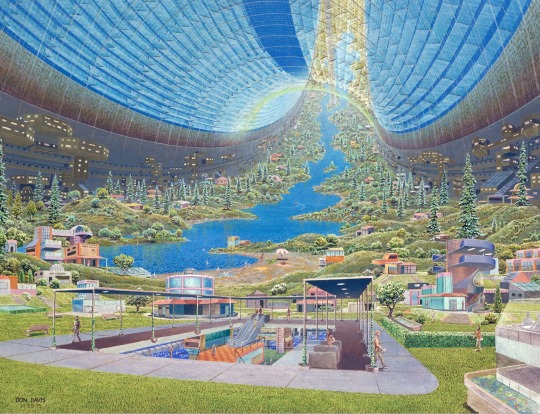
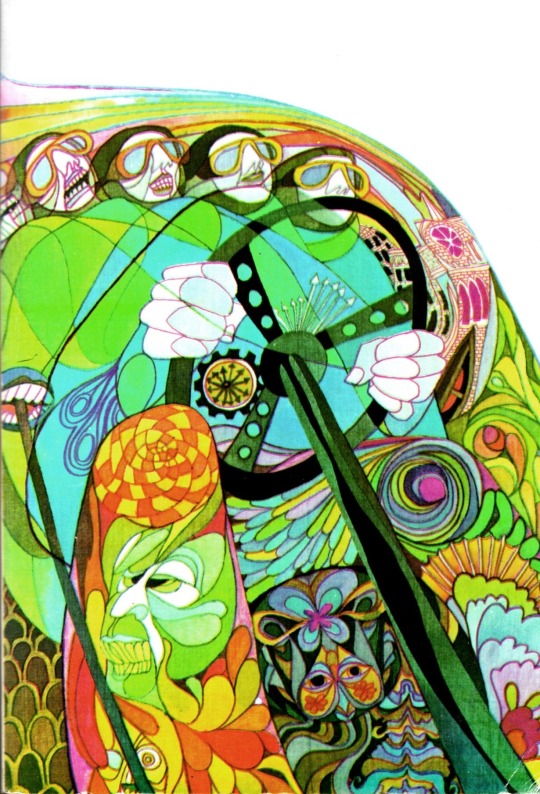



I have an interview out on Crime Reads about my new art book Worlds Beyond Time!
Check it out here for a conversation on Galileo magazine, the artist-author relationship, cover art trends, and more.
2K notes
·
View notes
Text
STEM resources🔬🪐🦠
Resources for STEM subjects ▪︎ A-levels ▪︎ IB ▪︎ University entrance exam prep ▪︎ STEM book reviews ▪︎CV help
~~~~~~~~~~~~~~~~~~~~~~~~~~~~~
Articles to read
Sideroblastic anaemia
Rabies
Arctic Springtail
Topology
Story of the atom
Allergies
Genetic diagnosis with AI
#STEM#articles#website#biology#chemistry#technology#physics#sciences#maths#math#studyblr#studying#a levels#IB#ib#cv#university#exams
148 notes
·
View notes
Text
"The world's coral reefs are close to 25 percent larger than we thought. By using satellite images, machine learning and on-ground knowledge from a global network of people living and working on coral reefs, we found an extra 64,000 square kilometers (24,700 square miles) of coral reefs – an area the size of Ireland.
That brings the total size of the planet's shallow reefs (meaning 0-20 meters deep) to 348,000 square kilometers – the size of Germany. This figure represents whole coral reef ecosystems, ranging from sandy-bottomed lagoons with a little coral, to coral rubble flats, to living walls of coral.
Within this 348,000 km² of coral is 80,000 km² where there's a hard bottom – rocks rather than sand. These areas are likely to be home to significant amounts of coral – the places snorkelers and scuba divers most like to visit.
You might wonder why we're finding this out now. Didn't we already know where the world's reefs are?
Previously, we've had to pull data from many different sources, which made it harder to pin down the extent of coral reefs with certainty. But now we have high resolution satellite data covering the entire world – and are able to see reefs as deep as 30 meters down.
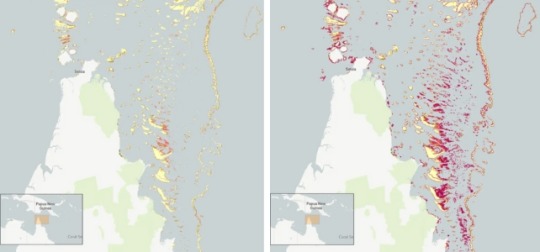
Pictured: Geomorphic mapping (left) compared to new reef extent (red shading, right image) in the northern Great Barrier Reef.
[AKA: All the stuff in red on that map is coral reef we did not realize existed!! Coral reefs cover so much more territory than we thought! And that's just one example. (From northern Queensland)]
We coupled this with direct observations and records of coral reefs from over 400 individuals and organizations in countries with coral reefs from all regions, such as the Maldives, Cuba, and Australia.
To produce the maps, we used machine learning techniques to chew through 100 trillion pixels from the Sentinel-2 and Planet Dove CubeSat satellites to make accurate predictions about where coral is – and is not. The team worked with almost 500 researchers and collaborators to make the maps.
The result: the world's first comprehensive map of coral reefs extent, and their composition, produced through the Allen Coral Atlas. [You can see the interactive maps yourself at the link!]
The maps are already proving their worth. Reef management agencies around the world are using them to plan and assess conservation work and threats to reefs."
-via ScienceDirect, February 15, 2024
#oceanography#marine biology#marine life#marine science#coral#coral reefs#environment#geography#maps#interactive maps#ai#ai positive#machine learning#conservation news#coral reef#conservation#tidalpunk#good news#hope#full disclosure this is the same topic I published a few days ago#but with a different article/much better headline that makes it clear that this is “throughout the world there are more reefs”#rather than “we just found an absolutely massive reef”#also included one of the maps this time around#bc this is a really big deal and huge sign of hope actually!!!#we were massively underestimating how many coral reefs the world has left!#and now that we know where they are we can do a much better job of protecting them
448 notes
·
View notes
Text

Mysterious ancient earthworks called Geoglyphs, in Rio Branco, Acre, Brazil. (Larger).
#geoglyph#geoglyphs#earthworks#ancient#ancient earthworks#ancient people#land art#agroforestry#archaeology#environment#earth science#aerial#nature#mysterious#rio branco#acre#brazil#science.org#article#articles
196 notes
·
View notes
Text
In eastern Mexico’s underground caverns and streams, a blind fish undergoes a peculiar adolescence: as it approaches maturity, taste buds begin to sprout under its chin and on top of its head, creeping toward its back.
“It’s a pretty wild amplification of the sensory system of taste,” says Josh Gross, an evolutionary geneticist at the University of Cincinnati and a co-author of a recent study on the cave fish in Nature Communications Biology. Gross and his team discovered that the new buds blossom around the time when the fish transition from eating larval crustaceans to gobbling up their adulthood staple: bat guano. Taste buds outside their mouths might be helping the fish detect bat droppings in the utterly dark, “food-starved” caves, Gross says.
Wandering taste buds aren’t unheard of elsewhere, especially in other fish. Some damselfish cultivate taste buds on their fins, and channel catfish have them across their midsections. And as alien as it may seem, many cells throughout the human body can taste, too. They’re just not sharing the flavors with your brain like taste buds do.
Lora Bankova is a Harvard Medical School respiratory biologist who studies tuft cells, a cell type sprinkled within human mucous tissues like those lining your nostrils, throat and gut. These “rapid responder” cells trigger the immune system if they detect an outside threat, and many of them rely on built-in taste receptors (the same kinds found on taste-bud cells) to do so. Bankova notes that many potentially harmful bacteria communicate via signaling chemicals called lactones—which also happen to activate taste receptors attuned to bitter flavors, prompting tuft cells’ immune response. And it turns out that even environmental allergies may be a matter of taste: dust mites and several mold species can also set off a tuft cell’s taste receptors, Bankova says.
“Evolutionarily, taste receptors [have moved around] the body to protect us from the air we inhale and all the attacks we’re getting through the orifices,” Bankova says. “They’re in the inner ear, the urethra, everywhere something can get into your body.”
Such “extra” taste receptors aren’t just bouncers at the door—they taste test for our internal systems, too. Receptors for sweet tastes help to tune insulin production in the pancreas and make sure neurons in the brain have access to enough glucose. Sweet, bitter and umami receptors in the gut modulate digestion.
Gross says it’s still a mystery what taste receptors the bat guano activates in the blind cave fish. “There may be some sugar content if it’s a fruit bat, maybe some protein content if it’s a carnivorous bat,” he says. So far only the cave fish has signed up to sample it.
88 notes
·
View notes